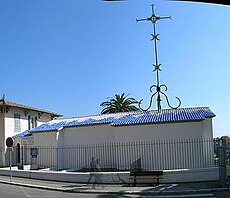
The Order of Preachers, commonly known as the Dominican Order, is a Catholic mendicant order of pontifical right that was founded in France by a Castilian priest named Dominic de Guzmán. It was approved by Pope Honorius III via the papal bull Religiosam vitam on 22 December 1216. Members of the order, who are referred to as Dominicans, generally display the letters OP after their names, standing for Ordinis Praedicatorum, meaning 'of the Order of Preachers'. Membership in the order includes friars, nuns, active sisters, and lay or secular Dominicans. More recently, there have been a growing number of associates of the religious sisters who are unrelated to the tertiaries.
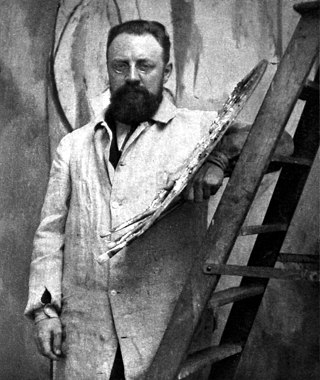
Henri Émile Benoît Matisse was a French visual artist, known for both his use of colour and his fluid and original draughtsmanship. He was a draughtsman, printmaker, and sculptor, but is known primarily as a painter.

St Francis Xavier's Church is a Roman Catholic church in Salisbury Street, Everton, Liverpool, Merseyside, England. The church is recorded in the National Heritage List for England as a designated Grade II* listed building. It is an active parish church in the Archdiocese of Liverpool and the Pastoral Area of Liverpool North.

Notre-Dame du Haut is a Roman Catholic chapel in Ronchamp, France. Built in 1955, it is one of the finest examples of the architecture of Franco-Swiss architect Le Corbusier. The chapel is a working religious building and is under the guardianship of the private foundation Association de l’Œuvre de Notre-Dame du Haut. It attracts 80,000 visitors each year. In 2016, it was inscribed on the UNESCO World Heritage List in along with sixteen other works by Le Corbusier, because of its importance to the development of modernist architecture.
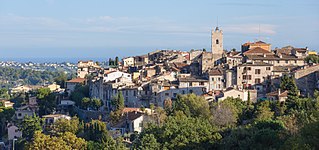
Vence is a commune set in the hills of the Alpes-Maritimes department in the Provence-Alpes-Côte d'Azur region in Southeastern France, north of Nice and Antibes on the Mediterranean coast.

The Basilica of the Sacred Heart in Notre Dame, Indiana, is a Catholic church on the campus of the University of Notre Dame, also serving as the mother church of the Congregation of Holy Cross (C.S.C.) in the United States. The neo-gothic church has 44 large stained glass windows and murals completed over a 17-year period by the Vatican painter Luigi Gregori. The basilica bell tower is 230 feet (70 m) high, making it the tallest university chapel in America. It is a contributing building in Notre Dame's historic district listed on the National Register of Historic Places. The basilica is a major tourist attraction in Northern Indiana, and is visited annually by more than 100,000 tourists.

The Honan Chapel is a small Catholic church built in the Hiberno-Romanesque revival style on the grounds of University College Cork, Ireland. Designed in 1914, the building was completed in 1916 and furnished by 1917. Its architecture and fittings are representative of the Celtic Revival movement and evoke the Insular art style prevalent in Ireland and Britain between the 7th and 12th centuries.

Saint-Brieuc Cathedral is a Roman Catholic church located in the town of Saint-Brieuc, Brittany, France, and dedicated to Saint Stephen.
Marie-Alain Couturier, O.P., was a French Dominican friar and Catholic priest, who gained fame as a designer of stained glass windows. He was noted for his modern inspiration in the field of Sacred art.
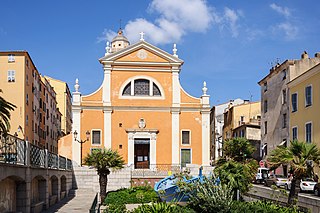
Ajaccio Cathedral, officially the Cathedral of Our Lady of the Assumption of Ajaccio and also known as the Cathedral of the Assumption of Saint Mary, is a Roman Catholic church located in Ajaccio, Corsica. The cathedral is the ecclesiastical seat of the Bishop of Ajaccio, a suffragan of the Archdiocese of Marseille. It is dedicated to the Virgin Mary, and is in the Baroque/Mannerist architectural style.

Our Lady of Manaoag is a Roman Catholic title of the Blessed Virgin Mary venerated in Manaoag, Pangasinan, the Philippines. The sacred statue is referred to as Apo Baket in the native language of local devotees.

TheBasilica of Our Lady of the Rosary is a Catholic church and minor basilica within the Sanctuary of Our Lady of Lourdes in France. Its main theme is a celebration and depiction of the Rosary.

St. Dominic's Cathedral, locally known as the Fanchuanpu Tianzhutang, is located by the Min River, Fuzhou, Fujian, China. It is the seat of the Metropolitan Archdiocese of Fuzhou and the Ecclesiastical Province of Fuzhou.
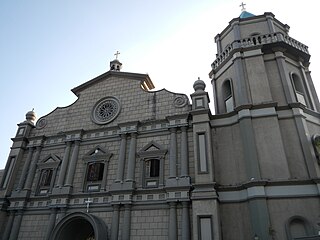
The Minor Basilica and Shrine Parish of Our Lady of the Rosary of Orani, commonly known as Orani Church, is a Roman Catholic minor basilica built in the Neoclassical style located in the center of Orani, Bataan, in the Philippines. It is under the jurisdiction of the Diocese of Balanga.

St. Dominic Catholic Church is a Catholic Church in Miami, Florida, US. It is part of the Roman Catholic Archdiocese of Miami and consists of 118 parishes, spanning Coral Springs in the north and Key West, Florida in the south.
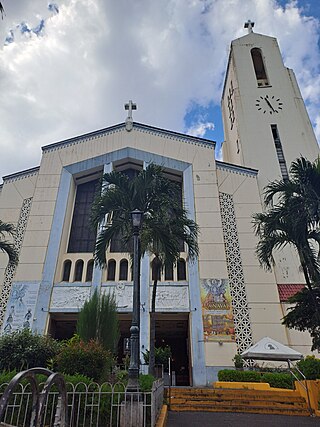
Santo Domingo Church, formally known as the National Shrine of Our Lady of the Holy Rosary of La Naval de Manila, is a Roman Catholic parish church and national shrine in Quezon City, Metro Manila in the Philippines. It is under the jurisdiction of the Diocese of Cubao. Dedicated to Mary, mother of Jesus under her title Our Lady of the Most Holy Rosary — La Naval de Manila, it was founded by the Dominicans in 1587.

The Ploudiry Parish close is an enclos paroissial located at Ploudiry within the arrondissement of Brest, Brittany. It comprises a church, ossuary, and calvary. The Parish close was built between the 1630s and 1650s, with major renovations taking place in the 18th and 19th centuries.

Santa Caterina d'Alessandria or Saint Catherine of Alexandria is a Roman Catholic church with a main facade on Piazza Bellini, and a lateral Western facade facing the elaborate Fontana Pretoria, in the historic quarter of Kalsa in the city of Palermo, region of Sicily, Italy. In front of the main facade, across the piazza Bellini, rise the older churches of San Cataldo and Santa Maria dell'Ammiraglio, while across Piazza Pretoria is the Theatine church of San Giuseppe and the entrance to the Quattro Canti. Refurbished over the centuries, the church retains elements and decorations from the Renaissance, Baroque, and late-Baroque (Rococo) eras. This church is distinct from the Oratorio di Santa Caterina found in the Olivella neighborhood.

St. Dominic Church is a parish of the Roman Catholic Church, established in 1852. It is located in Southwest Washington, D.C., in the Archdiocese of Washington, and is administered by the Order of Preachers, more commonly known as the Dominicans, in the Province of St. Joseph (Eastern).

The Tregist village chapel, also known as the Ortskapelle Tregist or the Chapel of Mary, Untier of Knots, is a Roman Catholic chapel located in the municipality of Bärnbach in western Styria. The chapel, dedicated to Holy Mary, is part of the Voitsberg parish and thus belongs to the Voitsberg pastoral area in the Styrian central region of the Graz-Seckau diocese.

